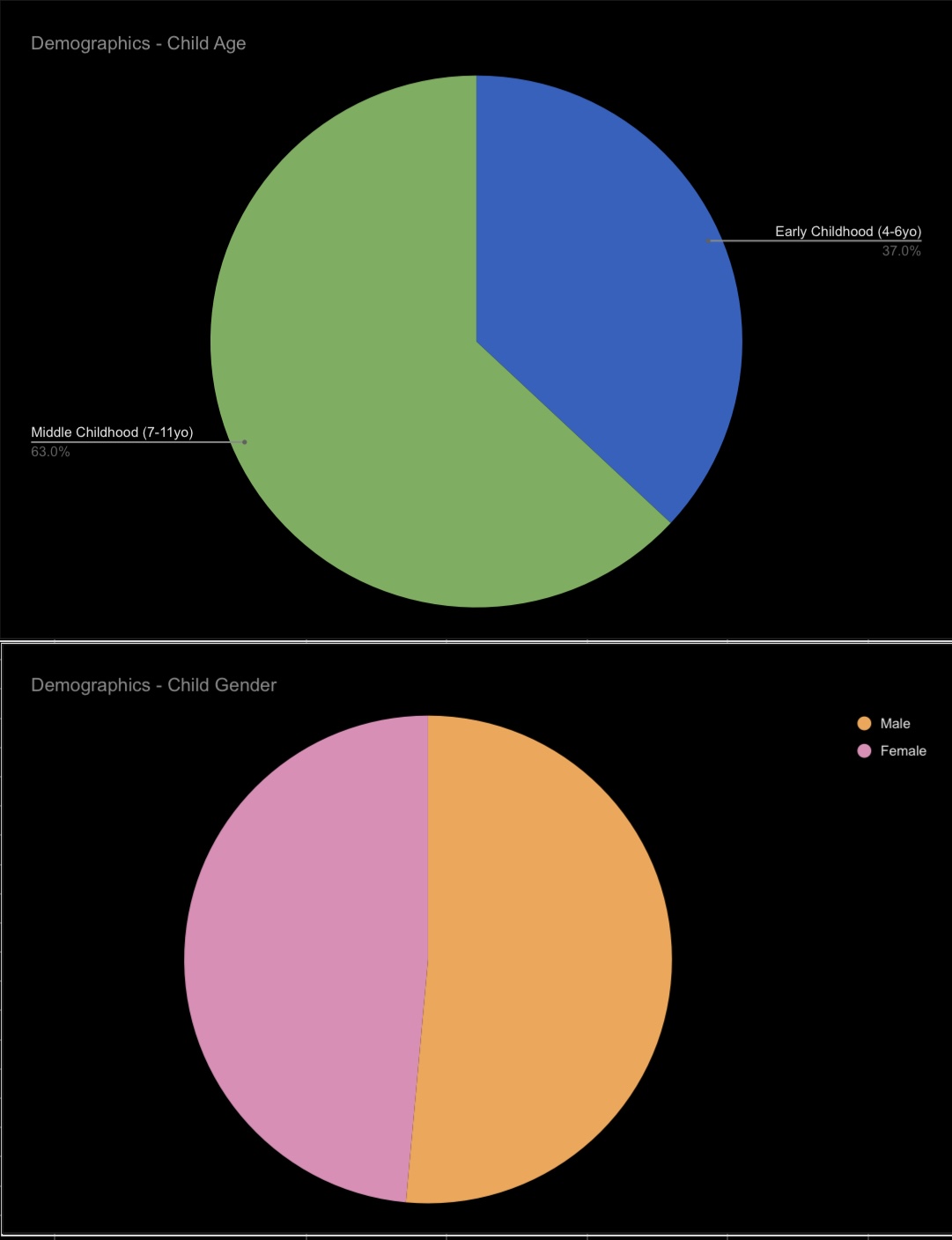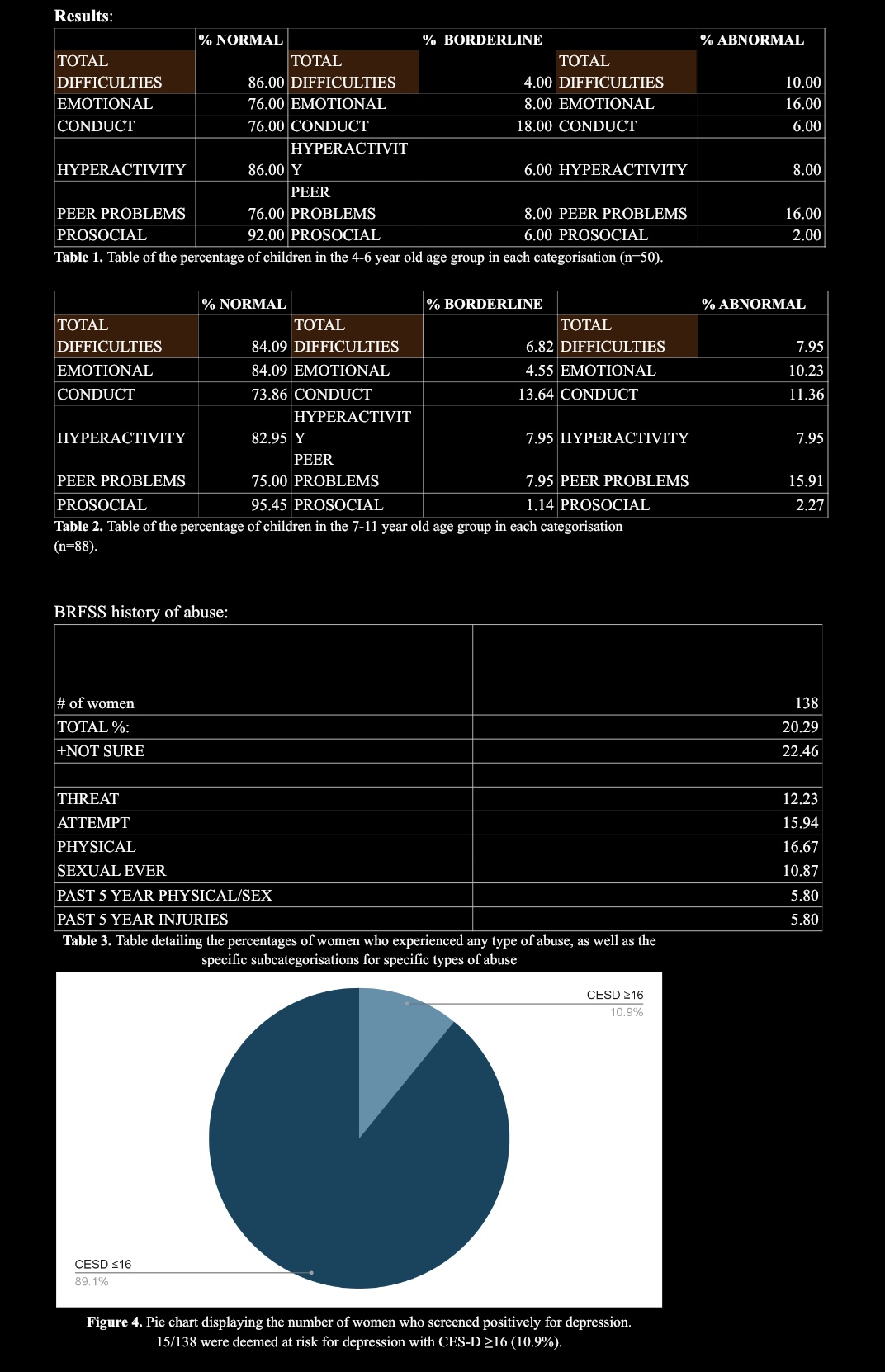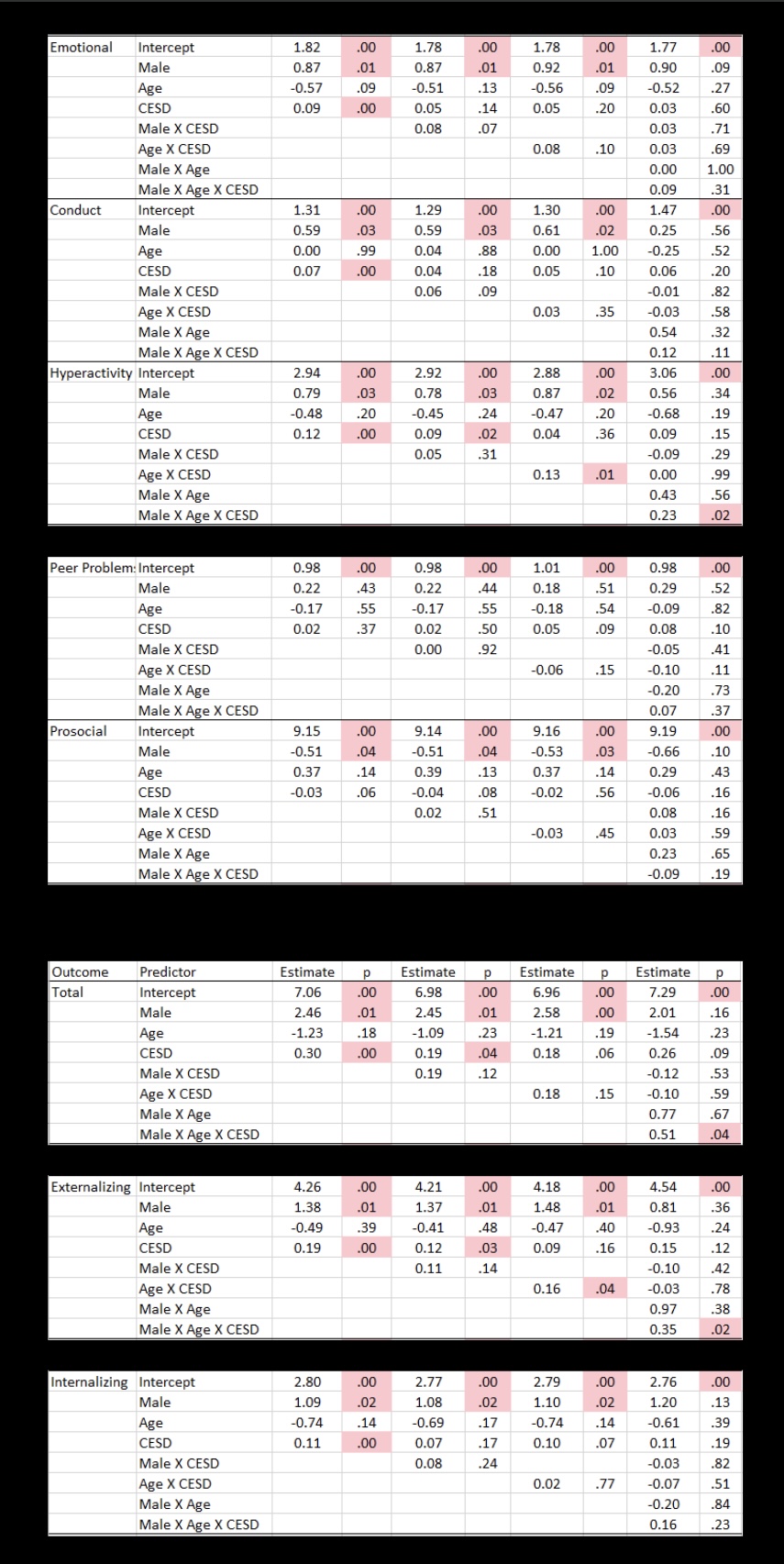Developmental and Behavioral Pediatrics
Session: Developmental and Behavioral Pediatrics 1: Parenting and Behavior
386 - Maternal Depression Risk and Child Behavior Problem Scores at an Immigrant Health Center
Friday, May 3, 2024
5:15 PM - 7:15 PM ET
Poster Number: 386
Publication Number: 386.204
Publication Number: 386.204
- BS
Brandon Shin, B.S.
Medical Student
Loma Linda University School of Medicine
Loma Linda, California, United States
Presenting Author(s)
Background: Maternal depression impacts child psychological development, including externalizing and internalizing child behavioral problems. Limited information exists on age and gender vulnerabilities, including in Latinx communities with historic lack of access to mental health services.
Objective: In this observational cohort study, recent immigrant Latinx mothers with children ages 4-11 (n=137) were recruited over a 12-month period at a federally qualified health center in Southern California. Participants met with Spanish-fluent interviewers and completed the Strengths and Difficulties Questionnaire (SDQ) for child behavior problems, the Center for Epidemiologic Studies Depression (CESD) questionnaire, and the Behavioral Risk Factor Surveillance System (BRFSS) Intimate Partner Violence Module.
Design/Methods: Regression models assessed association between CESD maternal depression risk and SDQ behavior scores. Additional models assessed interactions with child age and gender, as well as three-way interactions between all variables.
Results: 10.9% of mothers showed increased risk for depression, while 20% reported history of intimate partner violence. Among child behavior subscores, many children showed high scores in externalizing (31.9%) and internalizing (30.4%) categories, as well as other subcategories (8.7% total difficulties, 12.3% emotional, 9.4% conduct, 8.0% hyperactivity, 15.9% peer problems, 2.2% prosocial). In the general model, CESD depressive risk predicted SDQ conduct, emotional, and hyperactivity problems, (p < 0.01) but not peer problems (p=0.37) or prosocial score (p=0.06). Male gender was a predictor of all outcomes (p < 0.03) except peer problems. Older age moderated the association between CESD and externalizing (p=0.04) and hyperactivity (p=0.01) scores, but not emotional or conduct problems. While gender did not independently moderate CESD association with SDQ scores, there was a statistically significant three-way interaction between older age, male gender, and effects of CESD on SDQ scores. This was seen in total symptoms (p=0.04), as well as total externalizing (p=0.02) and hyperactivity scores (p=0.02). These findings differ from literature that traditionally depicts a moderating effect of maternal depression on female child behavior problems.
Conclusion(s): Overall, this neighborhood data showed rates of child behavior problems significantly higher than SDQ normative data for US populations. Further research needs to examine additional pathways linking maternal depression and child behavior problems, including parenting style and neighborhood social determinants of health.



